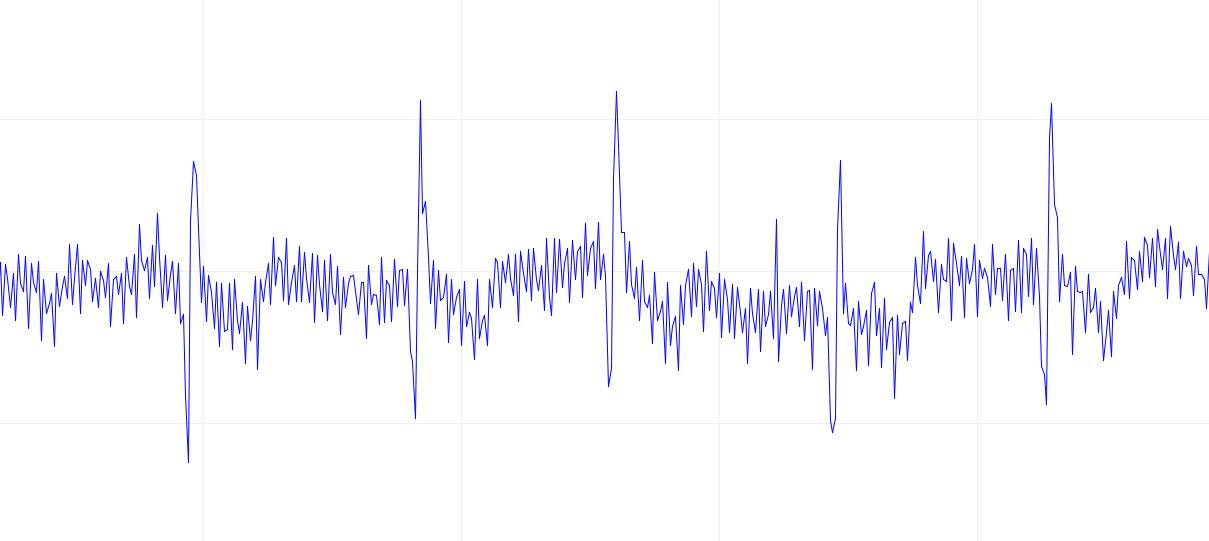Internet of Things in Healthcare Applications
Info: 7661 words (31 pages) Dissertation
Published: 22nd Dec 2021
INTRODUCTION
Internet of Things
IOT is a revolution in computer technology and communication that aims to connect objects together through the Internet. IOT is an idea of world-wide distributed network ,that can be fit into any environment with the aim of collect objects data and sending this information for storage and analysis through internet to some other location. This definition is given by Forbes magazine [18], Internet of Things means things interact with the Internet by employing sensors, microcontrollers, and transceivers for empowering communication and is built with suitable protocol stacks which help them interacting with each other and communicating with the users, thus becoming the constitutive part of the Internet.
Nowadays, the Internet is impacting the several aspects of the potential user’s everyday life [16]. IoT is highly dynamic distributed network which composed of a very large number of objects .Human beings supply most of the contents and information found on Internet so far, whereas in IoT, small objects transfer information. There are many applications for IoT like: Smart home, IoT in healthcare, IoT in agriculture, smart retail, energy engagement, connected cars, industrial internet, smart supply chain.
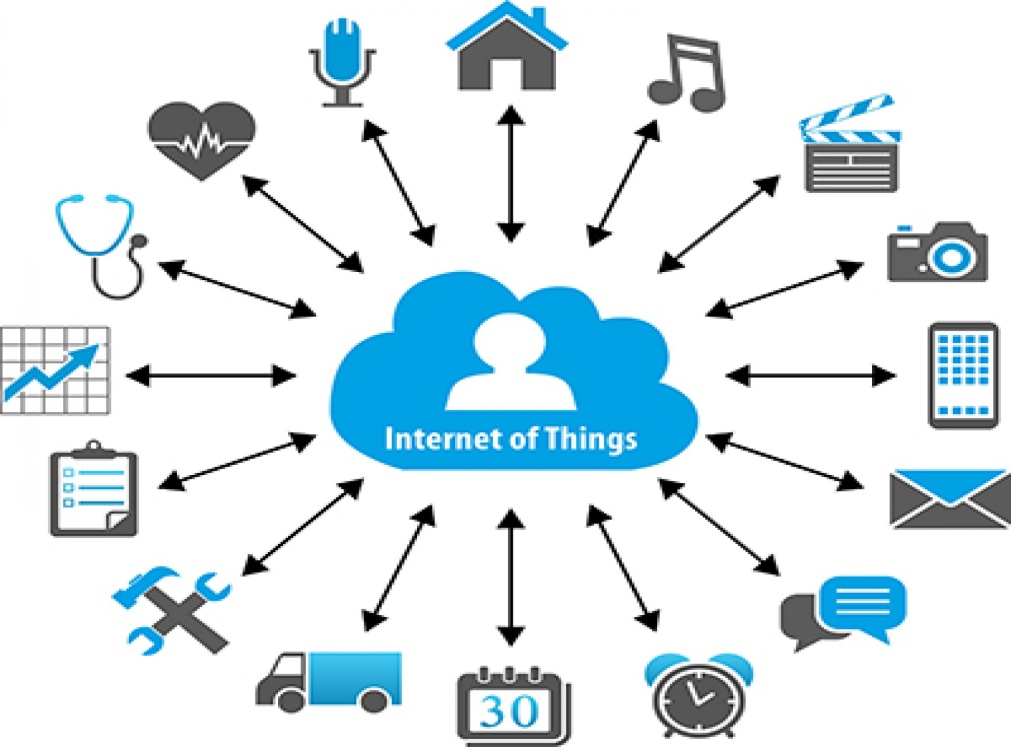
Figure 1 [40]: Applications of Internet of Things
According to Gartner, “the Internet of Things” will include 26 billion units installed by 2020, all capable of internet connection and inter-device connections [19]. Healthcare is one of the most attractive areas of IoT, which is the main focus of this project. Healthcare systems use a set of interconnected devices to create an IoT network devoted to healthcare assessment, including monitoring patients and automatically detecting situations where medical helps are required.
1.2 General characteristics of IoT
Internet of things is quite different from common Internet in communication aspect. For us the normal that communication could be established at any time and from everywhere, however Internet of Things has additional dimension – “anything”. So, the concept of IoT has some characteristics that demonstrate multi-dimensional comprehensiveness, information sharing, and intelligent processing:
- Interconnected. Internet of things facilitates people to devices and devices to other devices.
- Smart sensing. The majority of devices and actuators have embedded or connected sensors to detect current conditions.
- Intelligence. IoT devices have some calculating units and software used for smart decisions, predictions and automation control.
- Energetical efficiency. All IoT devices have to be efficient and able to use recyclable energy, boost own energy harvesting, if the application of device requires and allows it.
- Expressing (or data sharing). IoT connected devices have the capability to express and share their current state to all other connected devices. It allows better communication flow between user and machines.
- Safety. Internet of Things devices should help ensure the safety of individual life. All medical smart devices are a good example of this characteristic.
Moreover, Internet of Things has functional aspects:
- Function to get information from things
- Function to exchange information
- Function to process and control information intelligently
- Function at large scale
1.3 Internet of Things in Healthcare
IoT healthcare technology is set to revolutionize the healthcare industry to the next decade, as it has great potential and multiple potential applications, from remote monitoring to medical integration. IoT based healthcare system play an important role in the development of healthcare information systems. The dependency of healthcare on IoT is increasing day by day to enhance the access to care, strengthen the quality of care and finally reduce the cost of care , An better healthcare system should deal with real-time health monitoring , early detection of critical health condition and should provide home based care instead of costly clinical care [8].
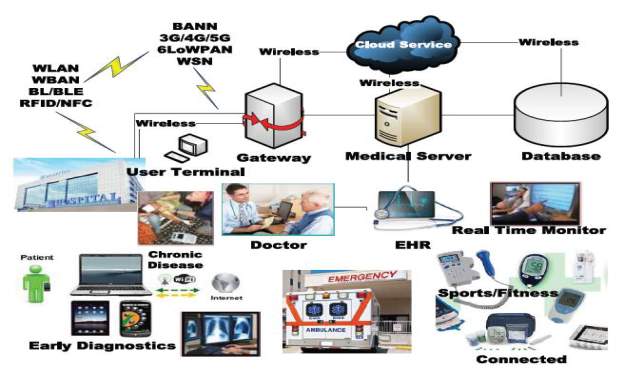
Figure 2 [14]: IoT healthcare trends
IoT ensures the personalization of healthcare services by maintaining digital identity for each patient. Due to non availability of ready to access healthcare systems, many health problems have been getting undetected in conventional healthcare systems. But pervasive, non-invasive, powerful IoT based systems have been helpful in monitoring and analyzing the patient data easily. In IoT based healthcare, various distributed devices gather, analyze and pass real time medical information to the cloud, thus making it possible to collect, store and analyze the big data streams in several new forms and activate context dependent alarms.
A research found by Aruba networks in march 2017 that by 2019, 87% of healthcare organizations will have adopted IoT technology and 76% will believe that it will transform the healthcare industry [20].Smart healthcare play an important role in healthcare applications through connecting bio-sensors and actuators to patient .IoT is utilized by clinical care to examine health statuses of patient through collecting bio-sensors data and analyzing patient heath information and afterward sending analyzed health data to laboratory centers to perform appropriate actions. For example, Masimo Radical-7 monitor the patient‘s status remotely and reports that should An clinical staff.
Recently, IBM used RFID innovation toward a standout amongst OhioHealth‘s doctor’s facilities will track hand washing after checking every tolerant. That operation Might be used to keep away from infections that cause regarding 90 000 passing’s and losing regarding $30 billion yearly. By on account about mishaps somebody need must personal of the clinic to getting ambulance, At on account about IoT At whatever point mishaps need aid takes place, the wearable units naturally provides for sign will closest Wi-Fi switch et cetera doctor’s facilities with get those ambulance, built upon her wellbeing states such as heartbeats.
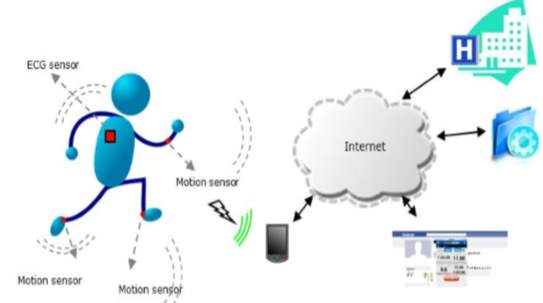
Figure 3 [16]: Healthcare using IoT
IoT can be used to supplement patient treatment through remote monitoring and communication, and to keep track of patients as they move through a healthcare facility . Hospitalized patients whose physiological status requires close consideration can be always observed utilizing IoT-driven, noninvasive checking. This sort of arrangement Employs sensors to gather far reaching physiological data and utilizations passages and the cloud to break down and store the data and after that send the dissected information remotely to parental figures for encourage investigation and survey. It replaces the process of having a health professional come by at regular intervals to check the patient‘s vital signs, instead providing a continuous automated flow of information.
In this way, it simultaneously improves the quality of care through constant attention and lowers the cost of care by eliminating the need for a caregiver to actively engage in data collection and analysis. There are people all over the world whose health may suffer because they don‘t have ready access to effective health monitoring. But small, powerful wireless solutions connected through the IoT are now making it possible for monitoring to come to these patients instead of vice-versa. These solutions can be used to securely capture patient health data from a variety of sensors, apply complex algorithms to analyze the data and then share it through wireless connectivity with medical professionals who can make appropriate health recommendations. Smart sensors, which combine a sensor and a microcontroller, make it possible to harness the power of the IoT for healthcare by accurately measuring, monitoring and analyzing a variety of health status indicators. These can include basic vital signs such as heart rate and blood pressure, as well as levels of glucose or oxygen saturation in the blood.
Smart sensors can even be incorporated into pill bottles and connected to the network to indicate whether a patient has taken a scheduled dose of medication. The main purpose behind the IoT based healthcare system is to provide better healthcare services to all the people anywhere and at any time in the world. This should be done in a more patient friendly and economic manner. So for increasing the patient care efficiency, there’s a necessity to enhance the patient health monitoring devices. In this paper a Arduino Uno hardware system is used as interface between bio-sensors nodes and web server. The system is cost effective and innovative. The utilization of IoT has also given a positive impulsion to healthcare analytics. With connected devices in the application, healthcare specialists can get access to a huge amount of health data, this helps in analyzing healthcare trends and also in measure the consequences of the particular drugs.
1.3.1 IoT healthcare networks
The IoT healthcare Network (IoThNet) is one of the essential element of the IoT in healthcare. It provide access to the IoT backbone, facilitates the transmission and gathering of health data, and enables the use of healthcare communications [39]. As shown in Fig. 4, this section discusses the IoThNet architecture, topology, and platform. However, it should be mentioned that the proposed architectures in [38] and [39] can considered as a decent beginning stage for developing knowledge into the IoT network.
The IoThNet topology refers to the arrangement of different elements of an IoT healthcare network and indicates representative scenarios of seamless healthcare environments. describes how a heterogeneous computing grid collects enormous amounts of vital signs and sensor data such as blood pressure (BP), body temperature, electrocardiograms (ECG), and oxygen saturation and forms a typical IoThNet topology. The IoThNet architecture refers to an outline for the specification of the IoThNet’s physical elements, their functional organization, and its working principles and techniques. The IoThNet platform refers to both the network platform model and the computing platform. This shows a systematic hierarchical model of how caregivers or agents can access various databases from the application layer with the help of a support layer.
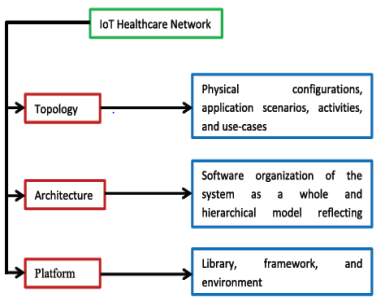
Figure 4 [14] IoT healthcare Network (IoThNet)
1.3.2 IoT Healthcare Applications
IoT applications deserve closer attention ,in addition to IoT services. It can be noticed that services are used to develop applications, while applications are specifically utilized by clients and patients . Therefore, services are developer-centric, whereas applications, user-centric. In addition to applications covered in this section, various gadgets, wearable’s, and other healthcare devices currently available in the market are discussed. These products can be viewed as IoT innovations that can lead to various healthcare solutions.
Glucose Level Sensing: Diabetes is a set of metabolic diseases in which there are high glucose (sugar) levels over a protracted period. Blood glucose level recording unveil individual patterns of blood glucose changes and helps in the planning of meals, activities, and medication times. An m-IoT method for noninvasive glucose level sensing on a real-time basis is described in [28].
Electrocardiogram Monitoring: The monitoring of the electrocardiogram (ECG), that is, the electrical activity of the heart recorded by electrocardiography, includes the measurement of the simple heart rate and therefore the determination of the essential rhythm as well as the diagnosis of multifaceted arrhythmias, myocardial ischemia, and protracted QT intervals [31].
Blood Pressure Monitoring: The integration of a KIT blood pressure (BP) meter and an NFC-enabled KIT mobile phone becomes part of BP monitoring based on the IoT is proposed in [32]. A motivating situation during which BP should be often controlled remotely is given by showing the communications structure between a health post and the health center or hospital.
Oxygen Saturation Monitoring: Heartbeat oximetry is appropriate for the noninvasive checking of blood oxygen immersion. The combination of the IoT with heartbeat oximetry is useful for technology-driven medical healthcare applications. A study of CoAP-based healthcare services talks about the capability of IoT-based heartbeat oximetry [37]. The function of the wearable pulse oximeter Wrist OX2 by Nonin is illustrated in [35]. This device comes with connectivity based on a Bluetooth health device profile, and the sensor connects directly to the Monere platform. An optimized low-power and cheap pulse oximeter for remote patient monitoring is proposed in [34].
Rehabilitation System: Because physical drugs and rehabilitation can enhance and restore the functional ability and quality of life of those with some physical disability. The IoT has the potential to boost rehabilitation systems in terms of mitigating issues coupled to aging populations and therefore the shortage of health specialists. An ontology-based automating design method for IoT-based smart rehabilitation systems is proposed in [33]. This design successfully demonstrates that the IoT is an efficient platform for connecting all necessary resources to provide real-time information interactions.
Healthcare solutions using Smartphone’s: Recent years have seen the rise of electronic gadgets with a smart phone controlled sensor, which highlights the rise of smartphones as a driver of the IoT. To make smartphones a versatile healthcare device various hardware and software products have been designed. An broad review of healthcare application for smartphones is efficiently provided in [36], as well as discussion on application for patients and general healthcare application as well as on medical education, training, information search application.
1.3.3 Benefits of IoT in healthcare
Here are the benefits of IoT for hospital & Healthcare:
Better patient engagement:
IoT healthcare helping to healthcare sector for moving from fee based service to value-based care; effective patient engagement plays a key role in the implementation of value-based care program. Applications of IoT helps patients to access their own health data, Through this way patient can be sure about progress in health and impact of care management on his health.
Real-time data for care managers:
The arrival of IoT in healthcare, care managers can get access real time health data of patients. There are many health application which are integrated with wearable sensors such as apple watch and other health applications. These applications sends real-time health data of patients to the cloud server , from cloud server care managers can get access to the patients real-time health data, These real-time health data helps care mangers to implement better care management program that helps patient in critical conditions.
Reduced healthcare cost:
Availability of real-time health data given solution of superior remote monitoring of patients. Healthcare application can not only take better take care of their patients remotely but it also helps in reducing overall healthcare cost and patient do not require to present physically and discuss particular case , so IoT also helps to reduce cost of healthcare.
The increased interest level of patients
Educated patient population is more interested in IoT healthcare applications, these people are not only understand importance of better health but also take part in health care management program.
Healthcare analytics:
The healthcare system generating large amount of data through connected devices IoT also given supportive impulsion to healthcare analytics, Doctors and care managers can get access to large amount of data or Electronic Health Records (EHR). EHR helps to measuring effect of particular drug on patient health.
Meaningful and timely health alerts:
Using healthcare applications care managers can sends alert to patient, which helps patients in critical health condition, through accessing real-time health data of patient, care managers can monitor patient health condition and whenever a particular health parameters goes beyond threshold value then care manager can send alert immediately. This can save lives of patient in critical condition.
Helping differently able people:
There are different types of disabled people, Who are Physically disabled, Mental disabled, Sensory disabled, Pervasive disabled, IoT healthcare application helps differently abled people to improve their lifestyle to some extend as normal people do [21] .Now we have IoT enabled wheelchairs , eye glasses ,hearing devices etc ,Which are helping many needy people.
Better chronic care management:
One of the most important aspects of chronic care management is continuously health checkup and health evaluation of chronic disease patient. IoT has provided this feature through remote patient monitoring, this helps doctor to access real-time data of chronic disease patient and makes doctor more confident about remote patient monitoring and can also monitor accurate health parameters from a remote location.
Enhanced Drugs & Medication Management:
Nowadays IoT helping to enhancing drugs and medication management as well .We have smart wireless pill bottles that track the medications and auto fill pill bottles when needed, this IoT based medication management product also providing better analytics of chronic care for patients.
Reduced Scope for Error:
IoT has given impulsion to the efforts of reducing medical errors. Using IoT we can integrate accurate medical data, analytic and automation based decision making system, this unique integration is more precise than ever. Thus IoT improving quality scores and healthcare is moving towards eliminating scope of errors.
1.3.4 Security challenges
In July 2014 HP released a study of result [19], revealing that 70% of most commonly used IoT devices contain vulnerabilities or easy to cyber attack. The number of connected devices increasing exponentially, this increase in IoT devices promises benefits to customers, It also leads to some security threats like: software vulnerabilities, denial of service, cross site scripting and weak password In reality private information of patients collected through remote monitoring system means to ensure security and privacy of patient health data there is a need for strategies and mechanisms. As discussed in [22], “Everything which is connected, new security and privacy problems arise e.g. integrity, confidentiality and authenticity of data collected and exchanged by things or objects”. Some security requirements listed below.
Data authentication: According to principle , retrieved information and addresses must be authenticated.
Resilience to attacks: The system should not have any single point of failure and in case of failure it should adjust itself to node failures.
Client privacy: Only the information provider should able to use from observing the use of system.
Access control: System administrator must be able to implement access control on user information.
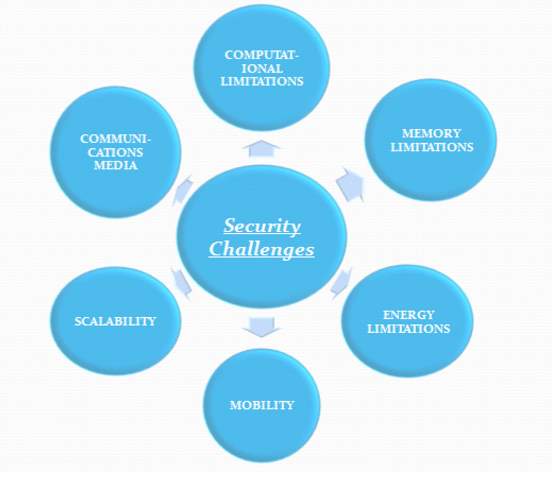
Figure 5 [26]: Security challenges in IoT healthcare
THESIS STRUCTURE
This thesis report is structured as follows: Chapter-III about literature survey which discuss related research work to IoT healthcare .Enhancement of features of exiting system and shortcomings are discussed in Chapter -IV, Chapter-V describe problem statement, Proposed Methodology and system Architecture of proposed system is shown in Chapter -VI. Chapter -VII discuss Hardware specification which are using to implement proposed system. Software tools are described in Chapter-VIII, Outcome of project in included in Chapter-IX , Conclusion of this thesis report in Chapter-X.
LITERATURE REVIEW
Number of researchers have addressed various issues of IoT in Health care, Various application of IoT Health care, security issues related to IoT healthcare and contributed research works. This section focuses on related research work in these areas provided through table 1:
Table 1
| S.No | Name of Author | Title and Journal Name | Year & Place | Outcome of research |
| 1. | Sara Amendola, Rossell Lodato, Sabina Manzari [1] | IoT-Based Personal Healthcare using RFID Technology in Smart Spaces , IEEE IoT Journal | April 2014 | In this paper presented a survey on the RFID for application to bodycentric systems and for gathering information about the user’s living environment. Much previous research work described and some RFID system that are able to process and collect human behavior data .Open challenges and possible research scopes also discussed [1]. |
| 2. | S. fayaz khan [7] | Health care monitoing system in IOT by using RFID , ICITM international conference | Cambridge, UK, March 2017 | This paper proposes a essential health monitoring system and complete monitoring cycle designed using IoT and RFID tags and Shows some experimental results against various medical emergencies. Integration of microcontroller with sensors is presented to measuring health status of patient and to increase the power of IoT [7]. |
| 3. | Chetan Sharma , Dr. Sunanda [12] | Smart Healthcare: An Application of IoT, NCETST-2017 | New Delhi Inda , May 2017 | This paper discuss making of health management more efficient through smart healthcare applications that have changed traditional healthcare system and also discuss current security challenges in IoT healthcare [12]. |
| 4. | Tarouco, Liane & Granville, Lisandro & Arbiza, Lucas [5] | Interoperatibility and security issues in IoT healthcare, IEEE International conference | Ottawa ,Canada ,June 2012 | REMOA is a project which provides homecare and telemonitoring of patient with chronic illness. Also discuss benefits and difficulties while integrating smart IoT devices in healthcare system [5]. |
| 5. | P. kumar dhir ,Deepika Agrawal, P.Gupta, ,J. Chhabra[6] | IoT based Smart HealthCare Kit , ICCTICT conference | New Delhi India, March 2016 | This project proposed is to give efficient medical services to patients which will help to reduce headache of patient to visit to doctor. An INTEL GALILEO development board is using for collection and integration of health data [6]. |
| 6. | Ravi Kishore Kodali, Govinda Swamy [8] | An Implementation of Internet of things for Healthcare , IEEE Raics conference | Trivandrum, India , Dec 2015 | This research work explains healthcare system implementation which helps to monitor psychological parameter periodically of the In-hospital patients using ZigBee mesh protocol [8] |
| 7. | Niewolny ,David [10] | How the IoT Revolutionizing Healthcare | November , 2014 | This paper explore role of Internet of Things in healthcare in greater depth and take a detailed look at the technological aspects of IoT healthcare systems and challenges the IoT represent for healthcare today[10] |
| 8. | Sapna tyagi , Amit agarwal, piyush mehaswari [3] | A conceptual framework for IOT-based healthcare system using cloud computing , Cloud System, 6th International Conference 2016 | Noida , India, Jan. 2016 | This paper explored role of IoT in healthcare delivery and its technological characteristics that make it a reality .Proposed a cloud based conceptual framework which will help to healthcare industry for implementing IoT healthcare system[3]. |
| 9. | MD. Humaun , S. M. Riazul, D. Kwak,S.Kwak, , M. Hossain [14] | The IoT for Health Care: A Comprehensive Survey ,IEEE Access | Korea, ,2015 | This paper reviews network architecture, industry trends, applications in IoT based healthcare systems. This paper survey security, privacy features, threats model in IoT from the healthcare prospective. Further this paper proposes intelligent security model to mitigate security risk and provide some path for future research on IoT based healthcare system [14]. |
| 10. | Méndez, Castro, Coral, D., W., Cabra, J., Colorado, J.[27] | Survey on IoT solutions applied to Healthcare | Colombia ,Dec 2017 | This paper survey focus on applications of IoT healthcare, this survey highlight healthcare applications, products and statistics that are obtained from the IoT healthcare technological sector. As discussed in [27] IoT sector applied to healthcare is categorized into five categories and three sub categories that help us to identify potential IoT healthcare trends. This survey paper open an biggest issues that the e-healthcare is facing is the acceptance of the most relevant users but this issue will be disappear as a new technology emerge. |
| 11. | Sharon Varghese [21] | Application of IoT to improve the life style of differently abled people | Kadayiruppu ,India ,May 2016 | In this paper author mainly is to provide healthcare solutions to differently abled people who are Physically disabled, Pervasive disabled, Sensory disabled, Mentally disabled and author tried to gather medical information people who are differently abled like: help visually disabled people to reach their destinations through guidelines ,so abled and differently abled people can communicate with each other. |
| 12. | Jingjing, Y., Shangfu, H., Xiao, Z., Benzhen[24] | Family health monitoring system based on the four sessions internet of things | Mar. 2015 | This paper discussed architecture of four section layer (perception layer, coordination layer ,application layer and network layer ) of IoT based healthcare system. The hardware and software system is designed and then smoothing is applied for real-time forecasting and monitoring of health status at the application layer. This study put firm foundations for accuracy of health monitoring system based on IoT. |
| 13. | A. Rizzardi ,S. Sicari, A. Coen-Porisini, L.A. Grieco [26] | “Security, privacy and trust in Internet of Things: The road ahead” | July 2014 | This survey paper provided many open issues in IoT security field and also put some spot light on research of IoT security field and describes some security insurance and privacy requirements in heterogeneous environment including different involving technologies. After study this research paper we can say suitable solution is needed to design and deployed IoT system. |
FINDINGS
After performing intensive literature surveys describes in above section , the following shortcomings have been highlighted in the IOT healthcare.
- The Internet of Things architecture is highly complex which needs a hybrid cloud environment to run. These tools are imperative in making sure the monitoring of network compliance.
- The number of wearable’s, mobile devices and other connected things are increasing significantly. This increases the possibilities of using new types of applications that take advantage of their ubiquitous sensing and communication possibilities.
- Due to rapid development of IoT, millions of objects connected to the internet. These smart objects collects large amount of data that need to be processed, analyzed and store data for future examination. Hence scalability of IoT network is a major concern.
- Cost of most of the IoT healthcare system is very expensive so everyone can not afford these expensive IoT health care devices.
- Healthcare industry is already very sensitive to cyber security & data protection and connected devices certainly have the potential of increasing the risk of data breach. Implementation of IoT may increase the scope of ”Unauthorized data access”.
PROBLEM STATEMENT
These days, a promising trend in healthcare is to move basics health checkups and other health care services from hospital to the home environment. The existing systems provide the basic functionalities needed to be handled in IOT healthcare. There are many hardware devices available in the market which helps patient to monitor real-time health (like: fir-bit hand band) , which shows health status on a specific local device do not store on web server or cloud , due to local storage of data, health data can’t use globally. As study about previous work of IOT healthcare application, this system will help patient in case of emergency as well as also for normal health checkups. This project aims to provide real time precautions to the patient when he/she is not able to reach doctor in case of emergency.
PROPOSED METHODOLOGY
This Section describes proposed system in order to achieve desirable goals. This healthcare IOT system can likewise help persistent engagement and fulfillment by enabling patients to spend more time communicating with their specialist’s doctors. This thesis proposed a better real-time health monitoring system that is intelligent to monitor patient health status automatically using smart bio-sensors that collects patient health data. The sensor attached to the patient is a Heartbeat sensor ,AD8232 ECG sensor ,GSR (galvanic skin response) sensor and DS18B20 temperature sensor. This would help the doctor to monitor his patient from anywhere and also to the patient to send his health status directly without visiting to the hospital.
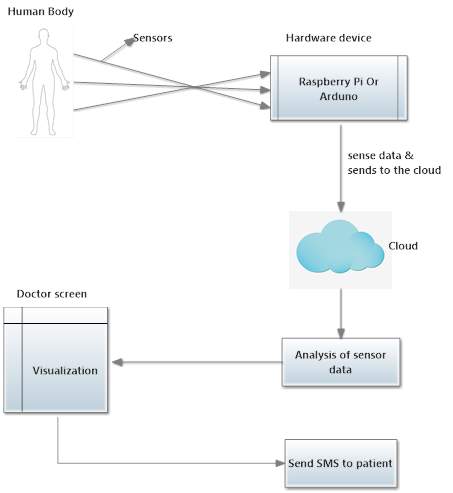
Figure 6: Proposed system flow diagram
The brain of this model is Arduino Uno microcontroller which works as a mediator between sensors nodes and cloud server. Arduino Uno collect bio-sensors data and send these data to cloud server using REST API for analyzing. This IoT healthcare system can be also used by normal people to monitor health status through bio-sensors by collecting data and after analyzed these collected data on cloud , the next step is to visualization of real time patient health data to doctor. This model can be deployed at various hospitals and medical institutes. The system uses bio-sensors that generates raw data information and send it to a database server where the data can be further analyzed and stats maintained to be used by the expert doctors and there is even track of previous Electronic health record (EHR) of the patient providing a better and improved examining.
These themes are of important enthusiasm to Freescale, where this system design and develop embedded technologies for use overall IoT-driven healthcare systems, including:
- Sensors that collect patient data
- Microcontrollers that process, analyze and wirelessly communicate the data
- Microprocessors that enable rich graphical user interfaces
- Healthcare-specific gateways through which sensor data is further analyzed and sent to the web server.
6.1 System Architecture
This section describes system architecture of physiological data acquisition system ,Data transmission and cloud processing . As shown in figure 7, hardware part contains Arduino Uno microcontroller , which is the main part of the hardware part. Hardware part contains Arduino Uno which is main controller of the system .In this, bio-sensors are used that are, heart beat sensor, ECG sensor ,GSR sensor ,temperature sensor used to sense various physiological parameters of human body. This system using ESP8266-01 wifi module to connect device to the internet. Bio-sensors are connected with Arduino Uno microcontroller and further sensors are connected with human bodies ,and Arduino Uno is connected with web server through ESP8266-01 wifi module . A 16*2 display is connected with Arduino for visualization of health data of the patient. At other side In software part a web application is used to collect bio-sensors data . Collected data at web application further analyzed and display physiological data of patient .This health care system also contains historical health data of every patient by which doctors can perform deeply analysis on those medical data in critical health condition of patient.
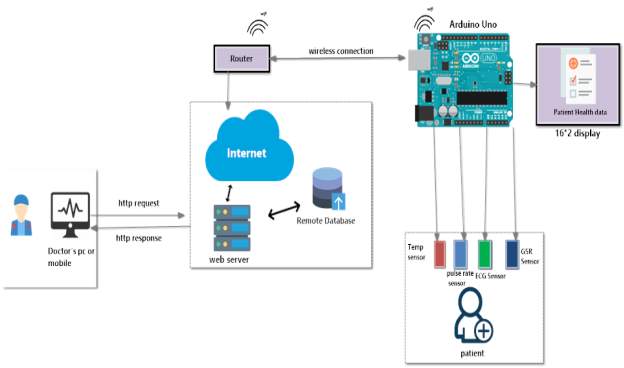
Figure 7: System Architecture
HARDWARE MODULES
In this Section various hardware devices described which are use to design IoT based healthcare monitoring system.
Arduino Uno
TheArduino Uno is a microcontroller board based on the ATmega328 . It consist 14 digital input/output pins (out of which 6 can be used as PWM outputs).It has 6 analog input pins (from A0 to A5), a 16 MHz crystal oscillator, a USB connection, a power jack, an ICSP header, and a reset button to reset the microcontoller. It contains everything needed to support the microcontroller; simply connect it to a computer with a USB cable or power it with a AC-to-DC adapter or battery to get started.
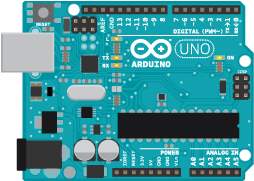
Figure 8 [41]: Arduino uno microcontroller
Image Source : https://www.arduino.cc/
Pulse rate sensor
Pulse rate sensor is an electronic device that is use to measure heart rate (speed of heart beat). Essence it is an integrated optical amplifying circuit and noise eliminating circuit sensor. Specifications :Operating voltage: 3.3V – 5V ,Current: 4mA , Indicator LED
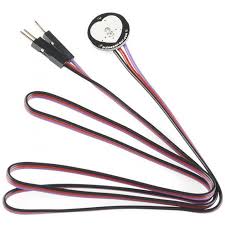
Figure 9 [42] : Pulse rate sensor
Body Temperature Sensor
The DS18B20 digital thermometer provides 9 to 12-bit Celsius temperature . The DS18B20 communicates with microcontroller over a 1-Wire bus that by definition requires just a single data line (and ground). Furthermore, the DS18B20 can derive power directly from the data line (“parasite power”).
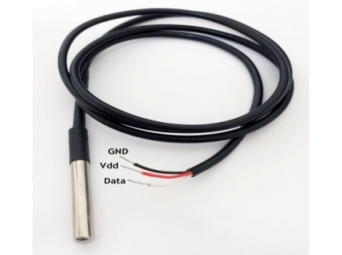
Figure 10 [43]: Body temperature sensor (ds18b20)
AD8232 ECG Sensor
The AD8232 module breaks out nine associations from the IC that you can patch pins, wires, or different connectors to. SDN, LO+, LO-, OUTPUT, 3.3V, GND give fundamental pins to working this screen with an Arduino or other advancement board. Likewise gave on this board are RA (Right Arm), LA (Left Arm), and RL (Right Leg) pins to append and utilize your own custom sensors. Additionally, there is an LED indicator light that will pulsate to the rhythm of a heartbeat.
Specification:
- Operating Voltage – 3.3V
- Analog Output
- Shutdown Pin
- LED Indicator
- Leads-Off Detection
- 3.5mm Jack for Biomedical Pad Connection or Use 3 pin header.

Figure 11 [44]: AD8232 ECG Module
GSR sensor
GSR(galvanic skin reaction), is a technique for estimating the electrical conductance of the skin. Forceful feeling can make boost your thoughtful sensory system, coming about more sweat being emitted by the sweat organs .GSR enables you to spot such forceful emotions by simple connecting two electrodes to two fingers on one hand.
ESP8266 Wifi module
The ESP8266 is a cheap Wi-Fi microchip with full TCP/IP stack and microcontroller capacity delivered by Shanghai-based Chinese producer, Espressif Systems. The chip initially went to the consideration of western producers in August 2014 with the ESP-01 module, made by an outsider maker, Ai-Thinker. This little module enables microcontrollers to associate with a Wi-Fi system and make basic TCP/IP associations utilizing Hayes-style orders. The ESP8285 is an ESP8266 with 1 MiB of built-in-flash, taking into consideration single-chip gadgets fit for associating with Wi-Fi. The successor to these microcontroller chips is the ESP32.
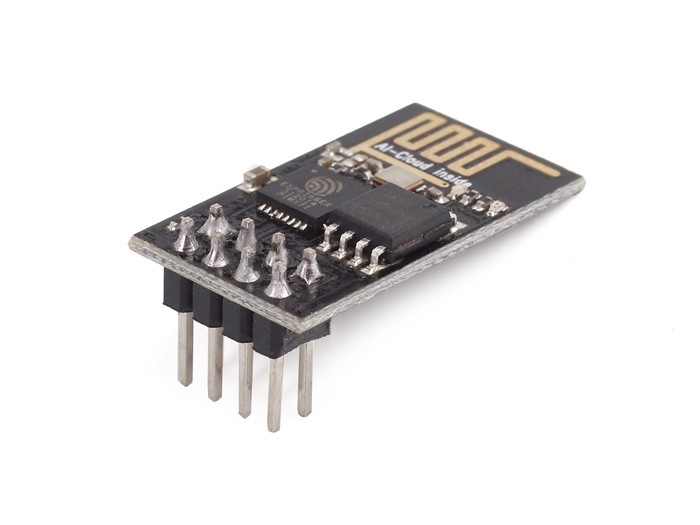
Figure 12 [45]: ESP8266-01 wifi module
16X2 Liquid Crystal Display (LCD)
Liquid crystal display is very important device in embedded system. Now days it is very common for screen industry to use LCD replacing Cathode Ray Tubes (CRT). Pixels are used for most flexible ones.
SOFTWARE DESCRIPTION
In this Section various software tools are described which are use to design IoT based healthcare monitoring system.
Arduino IDE (For h/w programming):
The Arduino Integrated Development Environment – or Arduino Software (IDE) – contains a content tool for composing code, a message region, a text console, a toolbar with catches for normal capacities and a progression of menus. It associates with the Arduino and Genuino equipment to transfer programs and speak with them. Projects composed utilizing Arduino Software (IDE) are called sketches . These representations are composed in the content tool and are spared with the record expansion .ino. The proofreader has highlights for cutting/sticking and for looking/supplanting content. The message zone gives criticism while sparing and trading and furthermore shows mistakes. The comfort shows content yield by the Arduino Software (IDE), including complete mistake messages and other data. The base righthand corner of the window shows the designed board and serial port. The toolbar catches enable you to confirm and transfer programs, make, open, and spare portrays, and open the serial screen.
Netbeans IDE (for web application programming):
NetBeans is a software development IDE (Integrated development environment) written in Java. The NetBeans Platform enables applications to be produced from an arrangement of particular programming segments called modules. Applications in view of the NetBeans Platform, including the NetBeans incorporated improvement condition (IDE), can be reached out by outsider engineers. The NetBeans IDE is fundamentally planned for improvement in Java, yet in addition bolsters different dialects, specifically PHP, C/C++ and HTML5. NetBeans is cross-stage and keeps running on Microsoft Windows, macOS, Linux, Solaris and different stages supporting a perfect JVM.The editorial manager underpins numerous dialects from Java, C/C++, XML and HTML, to PHP, Groovy, Javadoc, JavaScript and JSP.
Embedded C
Embedded C is a set of language extensions for the C programming language by the C Standards Committee to address commonality issues that exist between C extensions for different embedded systems. Historically, embedded C programming requires nonstandard extensions to the C language in order to support exotic features such as fixed-point arithmetic, multiple distinct memory banks, and basic I/O operations.
CakePhp Framework
CakePhp framework is use for server-side programming such an large scale web application. CakePHP is an open-source web framework. It follows the model–view–controller (MVC) approach and is composed in PHP, demonstrated after the ideas of Ruby on Rails, and conveyed under the MIT License. CakePHP uses well-known software engineering concepts and software design patterns, such as convention over configuration, model–view–controller, active record, association data mapping, and front controller [16].
RESULTS
This section shows bio-sensors connected with Arduino Uno which is capable to collect physiological data of patient’s through the sensors attached. The collected data is transferred to web server through REST API . The Real-time health information is provided through web application.
9.1 Real-time Healthcare monitoring system using IoT
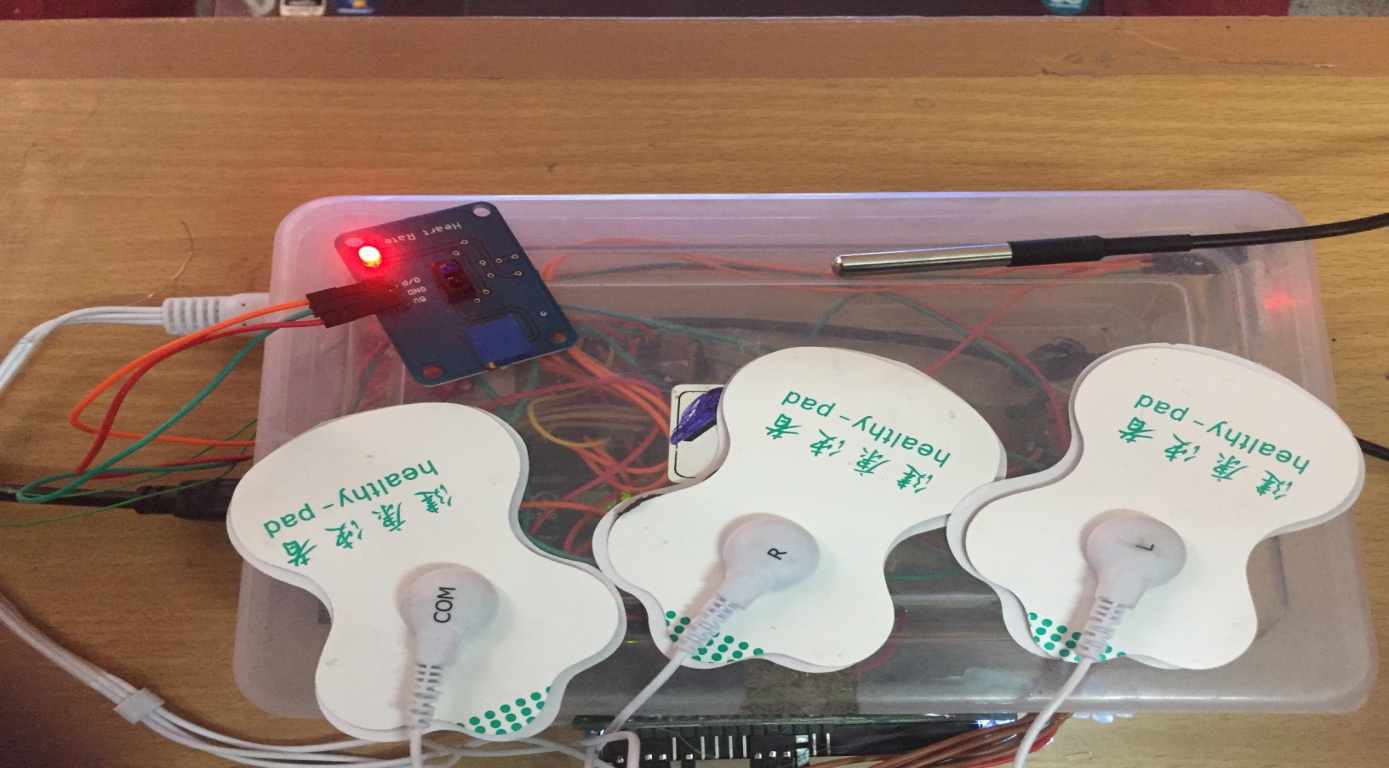
Figure 13: Sensors attached to device
9.2 Web server page for doctor to access patient data
To access real time health data of patient as well as historical health data of patient , doctor have to enter patient secret id.
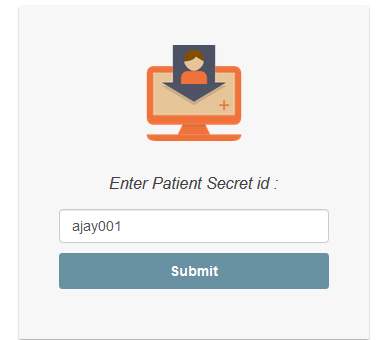
Fig 14: Permission UI to patient access health data
9.3 Data is uploading on web server in real-time
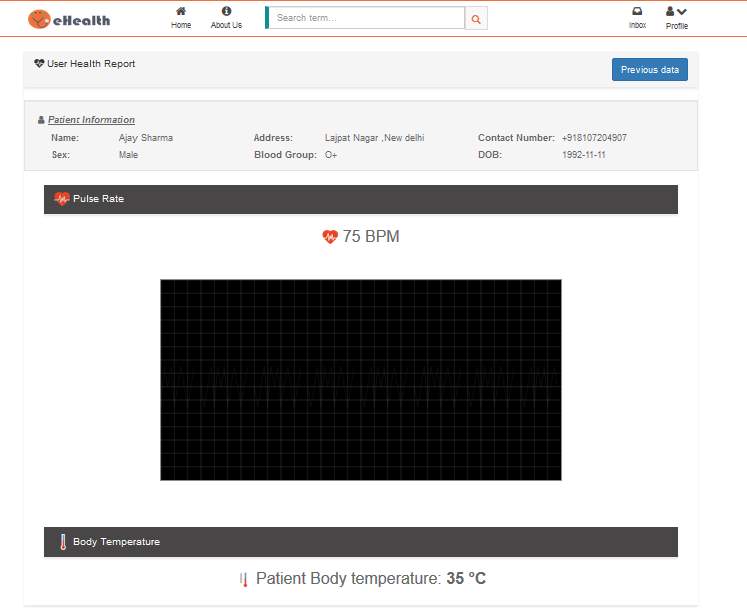
Fig 15: Screenshot of real-time data on web sever
9.4 AD8232 ECG Sensor data
Figure 16: ECG sensor data screenshot
9.5 Patient historical health data
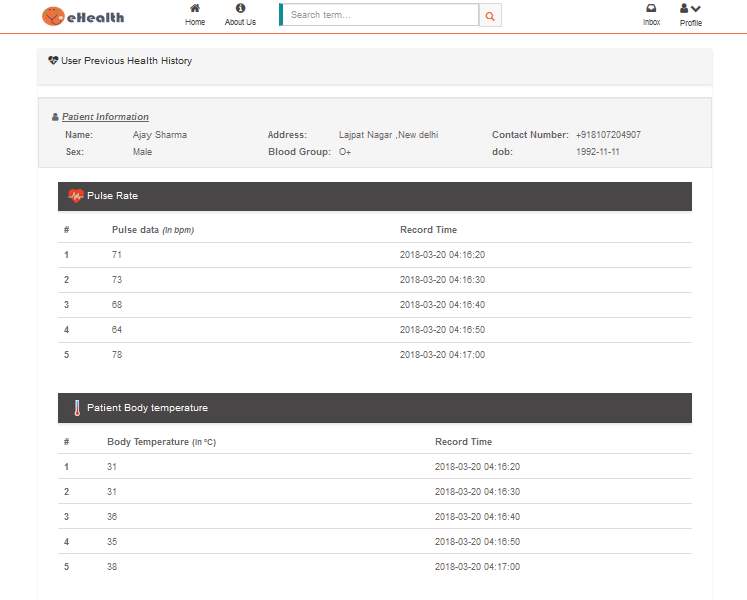
Fig 17: Historical health data screenshot
9.6 Recent Patient List
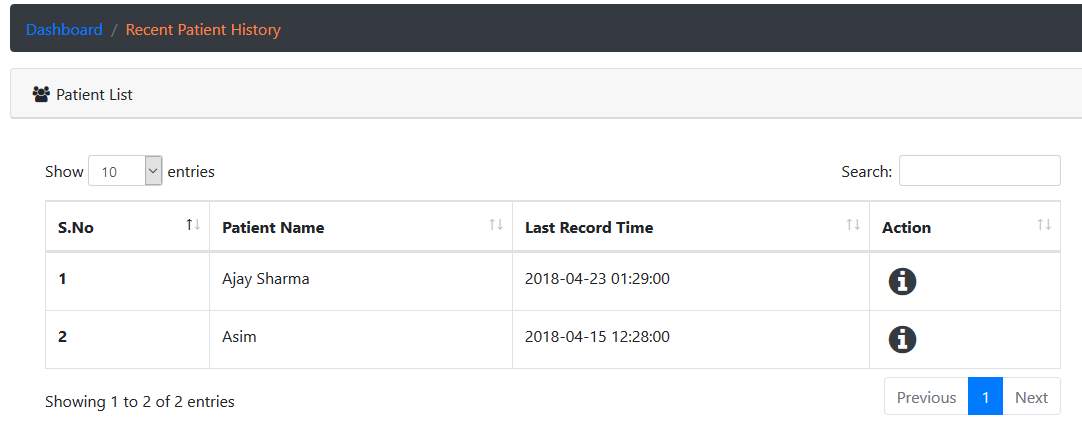
Figure 18: List of recent patient screenshot
9.7 Sending Message to patient through web application
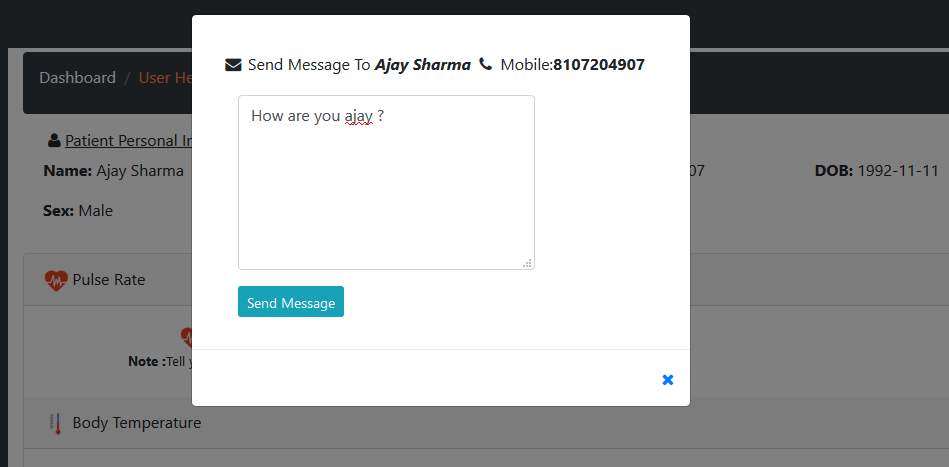
Figure 19: Sending message to patient screenshot
9.8 Chat between Doctor and Patient and vice versa

Figure 20: chat between patient and doctor screenshot
CONCLUSION AND FUTURE SCOPE
This thesis report appraise various security requirements and challenges and reveal different research problem in IoT healthcare to propose a model . The outcome of thesis has showed that it works on real time monitoring. The collected data is transferred to cloud through REST application programming interface. The Real-time information provided through web application improves health of the patient in case of emergency as well as for normal checkup. Final goals of the thesis are reducing the assistance and hospitalization costs, and increasing patient’s quality of life. Further work must be invented in building a proper error free healthcare monitoring and acquisition system using good quality bio-sensors and hardware devices and collected health data can be also use to predict patient disease , prediction can be perform on large amount of health data of different-different patients. This work can be done by using various Big data technology like: hadoop technology
Cite This Work
To export a reference to this article please select a referencing stye below:
Related Services
View allRelated Content
All TagsContent relating to: "Internet of Things"
Internet of Things (IoT) is a term used to describe a network of objects connected via the internet. The objects within this network have the ability to share data with each other without the need for human input.
Related Articles
DMCA / Removal Request
If you are the original writer of this dissertation and no longer wish to have your work published on the UKDiss.com website then please:

